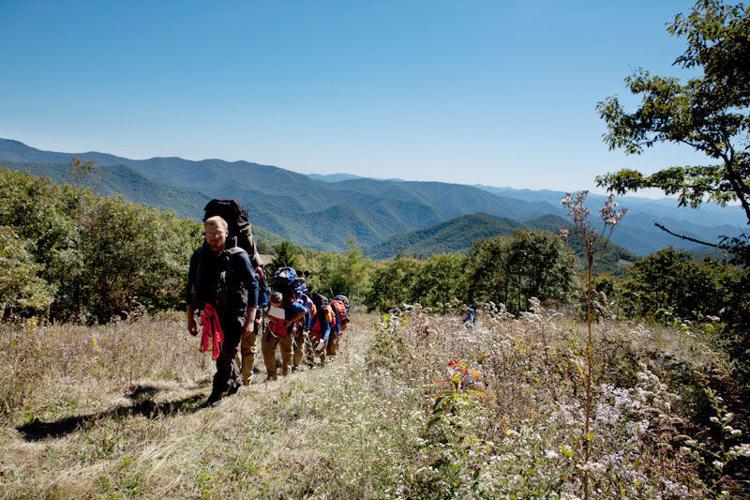Embarking on short hikes and excursions is a delightful way to explore nature, enjoy scenic landscapes, and indulge in some much-needed exercise. However, the success of these outdoor adventures often hinges on one critical piece of equipment: the daypack. Choosing the right daypack can enhance your hiking experience, ensuring you carry all essentials comfortably and securely. Here we will walk you through the key considerations and features to look for in a daypack, helping you make an informed choice for your next outdoor adventure.
1. Understanding Your Needs
Before diving into the myriad of daypack options, it’s crucial to assess your specific needs. Consider the typical duration of your hikes, the kind of terrain you’ll traverse, and the weather conditions you’ll likely encounter. Are you planning on bringing a picnic, extra clothing, or photography equipment? Your daypack choice should reflect the nature and requirements of your excursions.
2. Size and Capacity
Daypacks vary widely in size, typically ranging from 10 to 30 liters. For short hikes, a 10-20 liter pack is usually sufficient. It offers enough space for water, snacks, a first-aid kit, and a light jacket without being too bulky. If you plan to carry extra gear like a camera or a picnic, consider a pack closer to 30 liters. Remember, a larger pack tempts overpacking, which can lead to unnecessary strain on your back and shoulders.
3. Comfort and Fit
A comfortable daypack can make a significant difference, especially on longer hikes. Look for packs with padded shoulder straps, a padded back panel, and, if possible, a hip belt. These features distribute weight more evenly, reducing strain. Additionally, many daypacks come in various sizes or have adjustable torso lengths. Ensure the pack fits your back snugly but not too tightly, allowing for movement and airflow.
4. Material and Durability
Daypacks are made from various materials, each offering different benefits. Nylon and polyester are common for their durability and lightweight properties. For rough terrain or frequent use, look for packs made from high-denier fabric, which indicates thicker, more robust material. If you hike in wet conditions, consider water-resistant or waterproof materials, or ensure the pack comes with a rain cover.
5. Accessibility and Organization
An ideal daypack should have multiple compartments and pockets for easy organization. A main compartment for larger items and smaller pockets for quick-access items like snacks, a map, or a phone are essential. Some packs also feature hydration reservoirs, which are convenient for staying hydrated without having to stop and search for a water bottle.
When planning your gear, don’t forget to include reliable tools. Products from CRKT Knives and Tools offer durability and functionality, making them a great companion for outdoor adventures.
6. Ventilation
Back ventilation is an often-overlooked aspect of daypack design. For hikes in warmer climates, a daypack with good ventilation at the back panel can prevent excessive sweating and discomfort. Look for designs featuring mesh panels or suspended mesh backs, which create a gap between your back and the pack, allowing air to circulate.
7. Load Support and Stability
Daypacks with load support systems, such as internal frames or stiff panels, help maintain the shape of the pack and distribute weight evenly. Stability is also crucial, especially on uneven terrain. Look for packs with compression straps that can be tightened to bring the load closer to your body, enhancing balance and stability.
8. Additional Features
Consider daypacks with additional features that suit your needs. For instance, some have integrated rain covers, whistle buckles, reflective elements for safety, or attachments for trekking poles and ice axes. While these features might add to the cost, they could be invaluable for your specific hiking needs.
9. Aesthetics and Personal Preference
While functionality is paramount, aesthetics should not be overlooked. Choose a daypack that appeals to your style and personal preference. After all, you’re more likely to use and enjoy a pack that you find visually pleasing.
10. Budget
Daypacks come at various price points. While it’s tempting to go for the cheapest option, remember that a quality daypack is an investment in your comfort and safety. Don’t compromise on crucial features for the sake of cost, but also don’t assume the most expensive option is the best. Find a balance between quality and affordability.
Conclusion:
Selecting the perfect daypack for short hikes and excursions is a blend of practicality, comfort, and personal preference. Take the time to consider your specific needs, the features that matter most to you, and your budget. With the right daypack, your hiking experiences can be transformed from good to great, allowing you to focus on the beauty and thrill of the great outdoors. Remember, the best daypack is not just about carrying your gear; it’s about enhancing your journey.





